Manley Labs Jumbo Shrimp, Neo-Classic 300B and Snapper
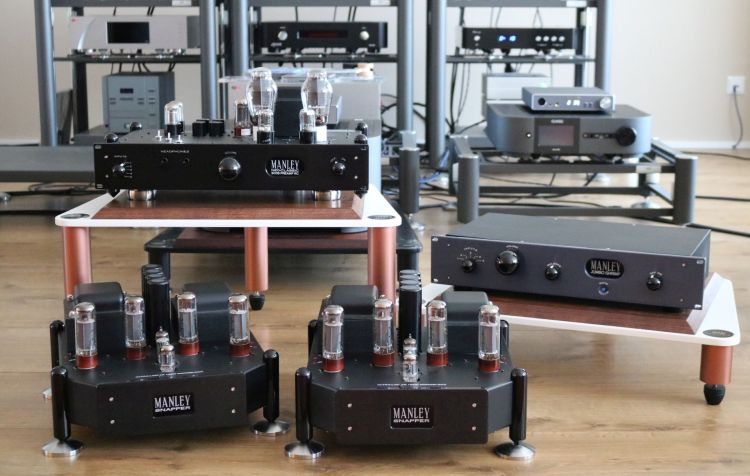
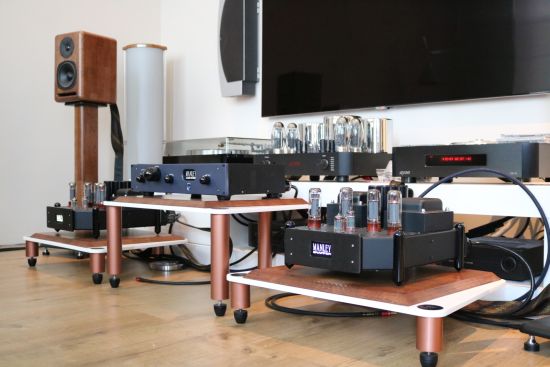
Review Context
I will be reviewing these components primarily in a system consisting of an Ayon CD-10 II CD player and DAC, an Antipodes EX Music Server running Roon, an Ayon Spirit III integrated amplifier and Xavian Perla Esclusiva loudspeakers. In this system, the interlinks are all AudioQuest Water cinch while I will use both FoilFlex and Driade Flow 405 speaker cables. The power cables are all Belden 19364 with Bals Schuko- and Oyaide C-004 IEC connectors.
Simultaneously over for review is a Vinnie Rossi L2i Signature Edition Integrated Amplifier which I will compare to the Manley combination. Interestingly, this hybrid 300B tube and FET power amplifier can be separated into its two parts and thus used as a pure tube preamplifier. As such, I will also use it in combination with the Manley Snapper Monos.
And, finally, I will see if the Snappers have fun driving the Magico S1 MkII loudspeakers in the other system. The source in this system will consist of the Aqua LinQ streaming endpoint with Roon via HQPlayer as a source and into the Aqua Formula xHD DAC with V2 output stage, feeding the Audio-GD Master 1 preamp. As in the other system, the speaker cables will be the Driade Flow 405 while the power cables are all Belden 19364 with Bals Schuko- and Oyaide C-004 IEC connectors. The only cinch interlinks that I have that are long enough to use in this system are the Siltech Paris. These may have been highly affordable back when they were available but they are exceedingly neutral and easily sufficiently revealing.
Listening – Jumbo Shrimp + Snappers
After having listened to my usual setup with the Ayon CD-10 II CD player and Ayon Spirit III integrated amplifier driving the Xavian Perla Esclusivas and switching to the Jumbo Shrimp fed by the Ayon CD-10 II CD player and the Snappers driving the Perla Esclusivas, the presentation changes entirely. Whereas the Ayon amp has solid-state-like, ballsy and sonorous bass and an overall slightly dry and “tube-unlike”, but very energetic presentation, the Manley presentation has undeniable tube characteristics.
The Manleys are dead-quiet, by the way. There is no noise coming from the speakers whatsoever. Perfect!
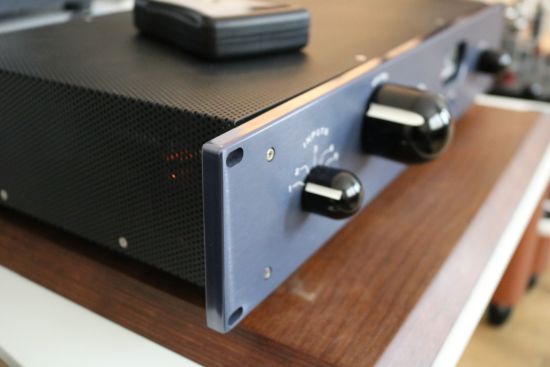
I love the front panel’s semi-gloss lacquer-like finish of the facia which is actually line-grained aluminum with high-polished edges which is then anodized. I also like the look and feel of the knobs which are high polished aluminum and then anodized black.
There’s an inviting sweetness combined with a high level of refinement and a lucid midrange. The frequency extremes are a little round but there’s a good level of definition. The bass is quite detailed and agile and not blurry per se but it could do with more expression and punch, especially in the upper-bass / lower midrange region where it feels a little reticent, not only compared to the Ayon but also in an absolute sense.
The Manleys don’t really unveil more detail than the Ayon but they present it differently and they sound considerably more refined and have more air. The treble, in particular, may be a little round but it does not sound rolled-off and it has lots of subtlety. I do feel, however, that the transitional area between upper midrange and lower treble shows some inconsistency in terms of openness and expression. Whereas the upper midrange is very open and communicative, the lower treble can be a little low in energy which makes certain instruments sound more or less present in the mix, depending on their pitch. This phenomenon may also aid the perception of the sound being open and detailed yet sweet and forgiving.
Whereas the Ayon is not a master of soundstaging, the Manley trio throws a wider and deeper stage along with more air around vocals and instruments, making them float freely within the stage. This, combined with the sweetness makes for a dreamy sound that is very easy to get lost into.
The Jumbo Shrimp + Snapper combination provides a smooth ride, not unlike a big classic American luxury car where road bumps are cushioned and you float smoothly across the landscapes. Unlike those classic cars, though, the Manleys do know how to take a turn.
The main question on my mind now is how much of the above observations apply to the Jumbo Shrimp and how much to the Snappers. Let’s see what the balance is like with another preamp.
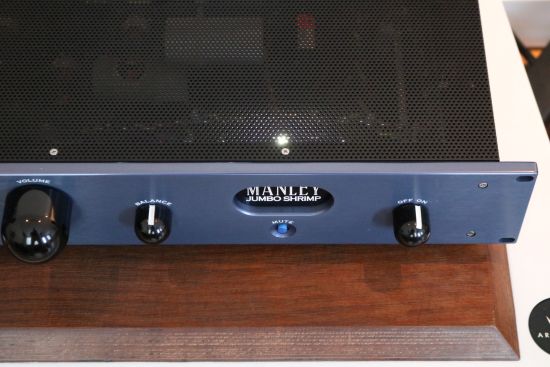
The internal light show certainly does have its charm…
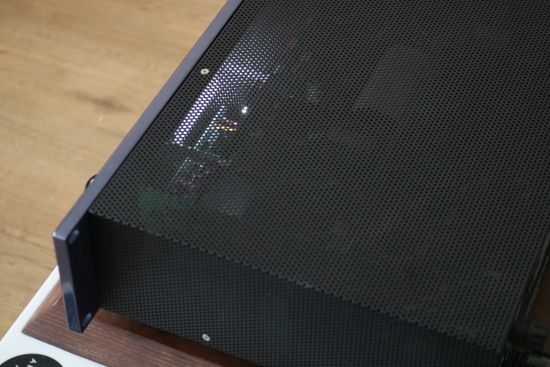
…especially with the Snappers
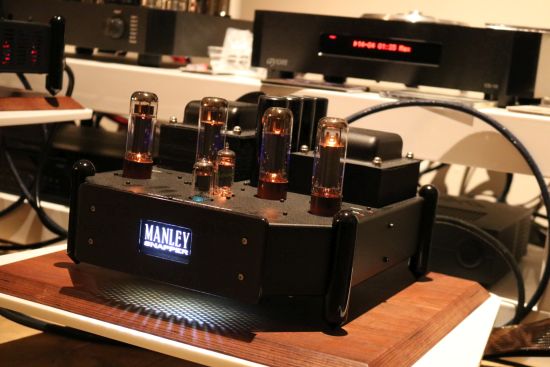
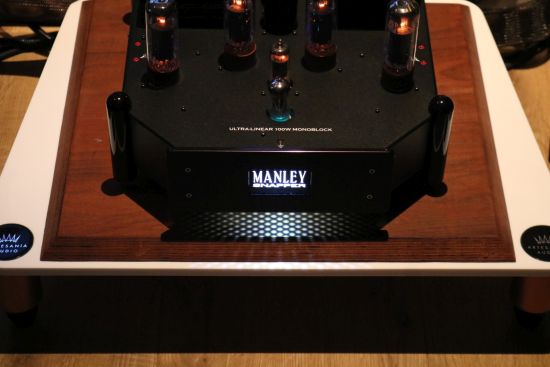
Listening – Neo-Classic 300B + Snappers
While I enjoyed the sound of the Jumbo Shrimp and Snapper system, it did not prepare me for what I was about to hear after swapping the Jumbo Shrimp for the Neo-Classic 300B preamp. Remember my note about the reticence in the upper bass? With the 300B, that’s gone. And not only is it gone, it’s substituted with a fullness that approaches the Ayon’s.
The mid-bass, too, has incomparably more power than with the Jumbo Shrimp. And the reticence that I noted in the upper midrange/lower treble region? Also gone. And this is noted immediately after having switched on the unit. Upon switch-on, unlike the Jumbo Shrimp, the Neo-Classic 300B sounds a little loudness-like, as in, its midrange is initially a little recessed. It’s not unpleasant at all, rather the inverse, it’s immediately hugely engaging. As the unit warms up, the soundstage grows from larger than the Jumbo Shrimp to larger than I have ever heard in this room before. Maybe only the Zanden 8120 was comparable in this respect. And, as the unit warms up, the midrange fills out further, gaining texture and substance until it reaches a point where the presentation is all-enveloping and completely captivating. I’m not sure if I have heard a preamp, tube or otherwise, that presented musicians so well-fleshed out, so organically and with such lyricism. Vocals and woodwinds, in particular, are presented highly realistically and absolutely captivatingly.
It’s tempting to believe that this has a lot to do with the 300B tube pair, but I have no doubt that the tube rectification and -regulation also play a part in this.
Within its expansive, room-filling soundstage bubble, all the performers are granted their own positions anywhere from left to right and front to back and with great precision and focus. Along with the superlative imaging comes a rich tonal palette. It’s a gobsmackingly liquid and generously full sound but, somehow, the timbre is absolutely natural and there’s never a feeling of overt richness or coloration.
Like the Jumbo Shrimp, the Neo-Classic 300B is neither slow nor hurried but just slightly relaxed but it does dynamics, too. The 300B + Snapper combo may still not be quite as tight and incisive as the Ayon but it’s certainly as lively and dynamic.

So beautiful and alluring is the 300B’s voluptuous presentation that it makes everything else seem bland and boring. And that is absolutely no hyperbole. But, of course, there’s a catch. There always is, isn’t there? The bass is full, rich and powerful but, as with the Jumbo Shrimp, it lacks that last bit of incisiveness and punch. With soul, blues, rock, smooth jazz, and lots of other genres, this is not at all evident and the presentation is pretty much technically perfect as well as superbly involving but with fast-paced or very complex music or music that relies heavily on rhythmic precision and articulation, some of the immediacy is lost.
Observations
Besides its gloriously enveloping and captivating sound, something you notice immediately after swapping from Jumbo Shrimp to the Neo-Classic 300B is that the latter has a moderate amount of hum. It’s always there, even with the volume turned to zero and you can hear it through the music when playing quietly. I don’t find it too distracting but it’s something to be aware of.
To some extent, I think the slight deficiency in the bass that I noted earlier may tie in with the 300B’s microphony. In generic, 300B’s are more microphonic than the average tube but in this application, they are pretty darn sensitive. I can say this because at this very moment I have a Vinnie Rossi L2i Signature Edition Integrated Amplifier for review that uses the same type and brand of tubes and also in its preamp stage. Granted, the Vinnie’s 300B’s are also microphonic but considerably less so and only when directly tapping the tubes.
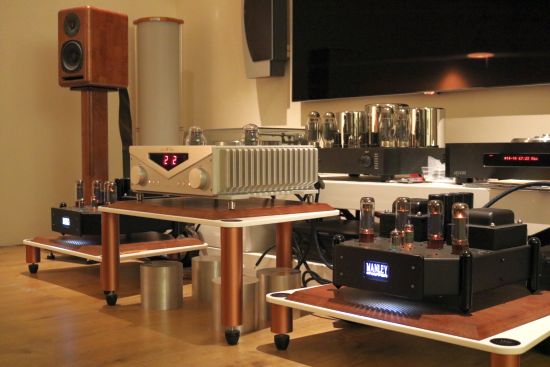
I found out about the Neo-Classic 300B’s microphony after flicking the switch from line-out to headphones to check if that would cure the hum and indeed it did. But upon flicking it back, I heard a bell-like noise with a long-decay coming from both speakers. When tapping the unit’s chassis, the same noise was heard and when tapping the tubes themselves, the sound was loudest. So, I guess that the tube sockets are mounted such that they are in direct contact with the preamp’s upper deck.
In talking about this with Frank of A Tube High Fidelity, it seems plausible that the hum is not typical for this model but rather specific to this sample. At this time, no replacement sample could be arranged but maybe I can confirm this at some point in the future.
Whether or not the microphony has any (negative) impact on the sound will remain uncertain but, regardless, the preamp sounds absolutely gorgeous.
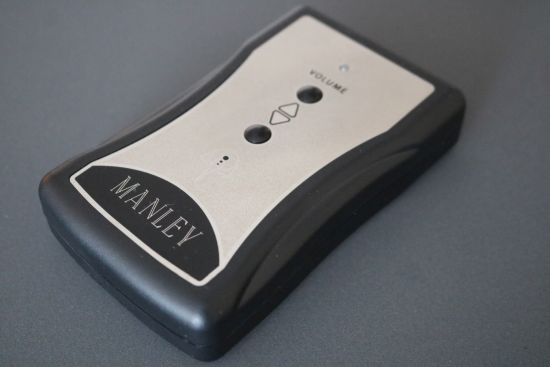
Personally, I feel that the handset’s dated looks are no proper fit for a preamp in this price class but, of course, beauty remains in the eye of the beholder.
Manufacturer’s comment: Being an RF remote, we cannot enclose the housing in “beautiful” machined metal or we’ll block the radio frequency transmission, nor would we want to add an ugly antenna. So that is why we had to make the REMORA remote out of plastic, with a thin etched metal inlay on the top.
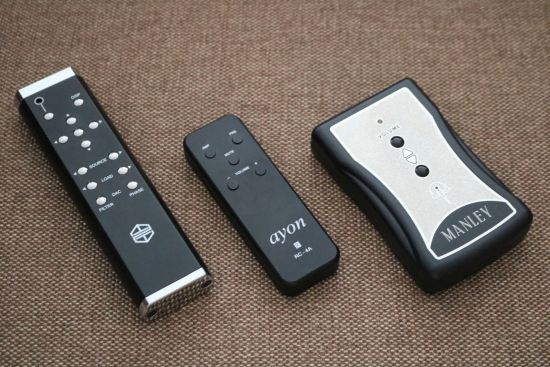
This lineup illustrates the Remora handset’s size. It’ll be next to impossible to “lose” the remote.
While RF works beautifully and without a need to point the handset in the direction of the preamp, I find that the volume up / volume down steps are much too large on both preamps. Invariably, the volume is too low at a given setting but too loud at the next. Either the motor continues for too long or it moves too quickly. Often, I found myself having to get up to manually set the desired volume level on the preamp itself.
Manufacturer’s comment: Thank you for this comment as we could perhaps slow it down in the programming of the commands (rewrite some code).
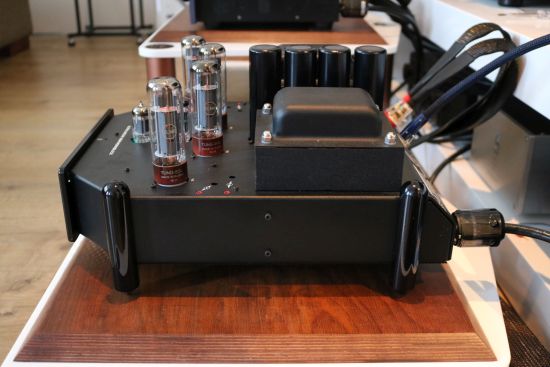
Source-Direct to the Snappers
Given the considerable sonic difference between the Jumbo Shrimp and Neo-Classic 300B preamps, I’ve not yet got a proper handle on how the Snappers behave. In order to find that out, I connected the Ayon CD10-II directly to the power amplifiers, made possible by the CD player’s built-in digital volume control. Since I know this player very well and because I also use it with the Ayon Spirit III integrated amplifier, a direct connection should give me a very good handle on the Snappers’ sound.
Depending on which preamp was used, the Snappers could sound linear and sort of incognito or euphoric, organic and highly involving. With a directly-connected CD10-II, I now get the feeling that the Snappers truly are chameleons because all I hear in terms of character is the sound of the CD10-II and nothing else. How’s that for transparent amplifiers?
Worth noting is that the Snappers are absolutely quiet. Apart from a high-pitched mechanical hum in one of the units which is not uncommon with tube products, there is absolutely no noise emitted from the speakers, no hum and no hiss, nothing.
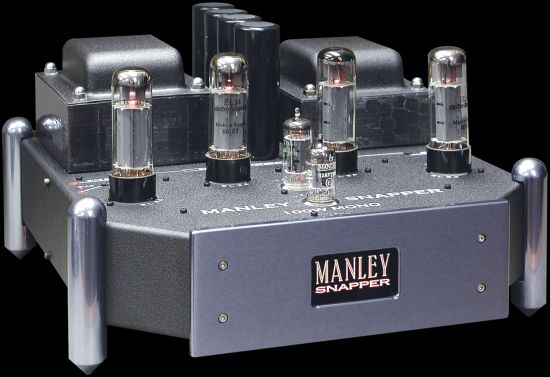
Alternative “Manley Blue” finish for the Snapper
This direct connection also confirms my feeling that the Shrimp is a little too mellow in the bass, for now, the sound is tighter and more articulate as well as considerably more impactful. This is good to know because that means that my aforementioned reservations have nothing to do with the Snappers and that, in fact, the Monos clearly have enormous potential.
With the CD player direct, the Manleys still provide a large soundstage that washes over you but, alas, not quite as overwhelmingly so as with the 300B, nor is it quite as lush, tangible and organic. That’s the special magic that you only get with that preamplifier. But, still, I really like what this simple combo achieves. It’s a solid, tuneful, positive and dynamic sound that makes my foot tap just like with the Spirit III while adding precisely the right amount of lushness and liquidity to produce a highly refined and emotionally involving sound without sounding rounded or particularly tubey.
The Snappers may not sound quite as robust in the bass as the Spirit III but that’s only fair when comparing EL34’s to KT150’s. On the other hand, no KT150 implementation that I heard has the liquidity and romance of EL34’s. Regardless, the Snappers are comfortably as linear, controlled and precise and, overall, almost as impactful as the Ayon Spirit III while being more refined and transparent.
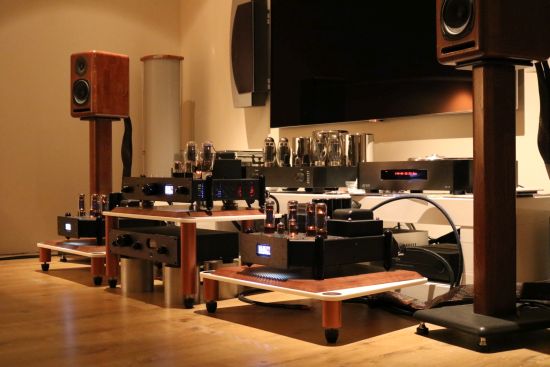
By now, it should be evident that I have not found a single downside to the Snappers’ performance! This made me decide to see if they would also be friends with the Magicos in the main system.
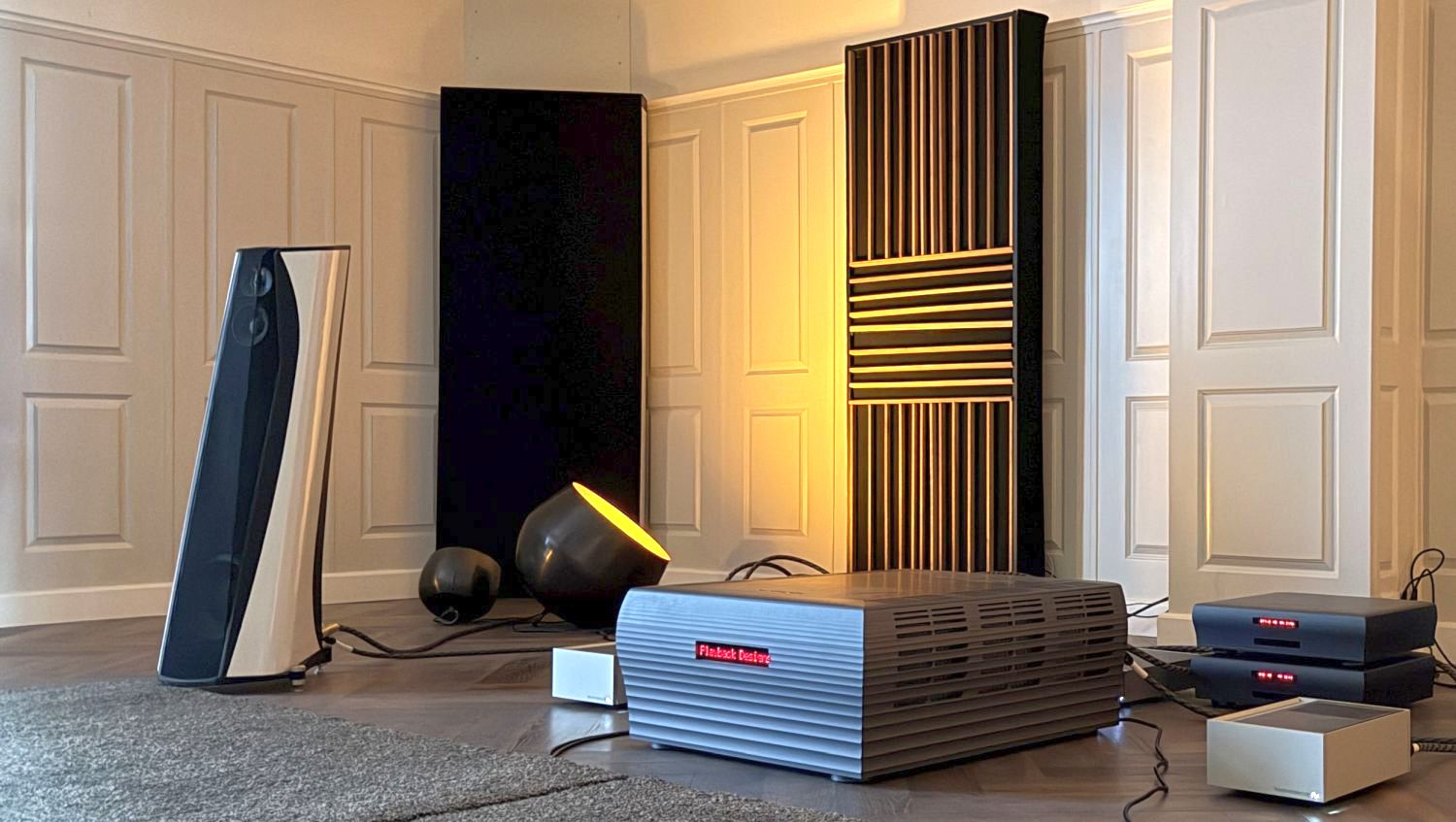

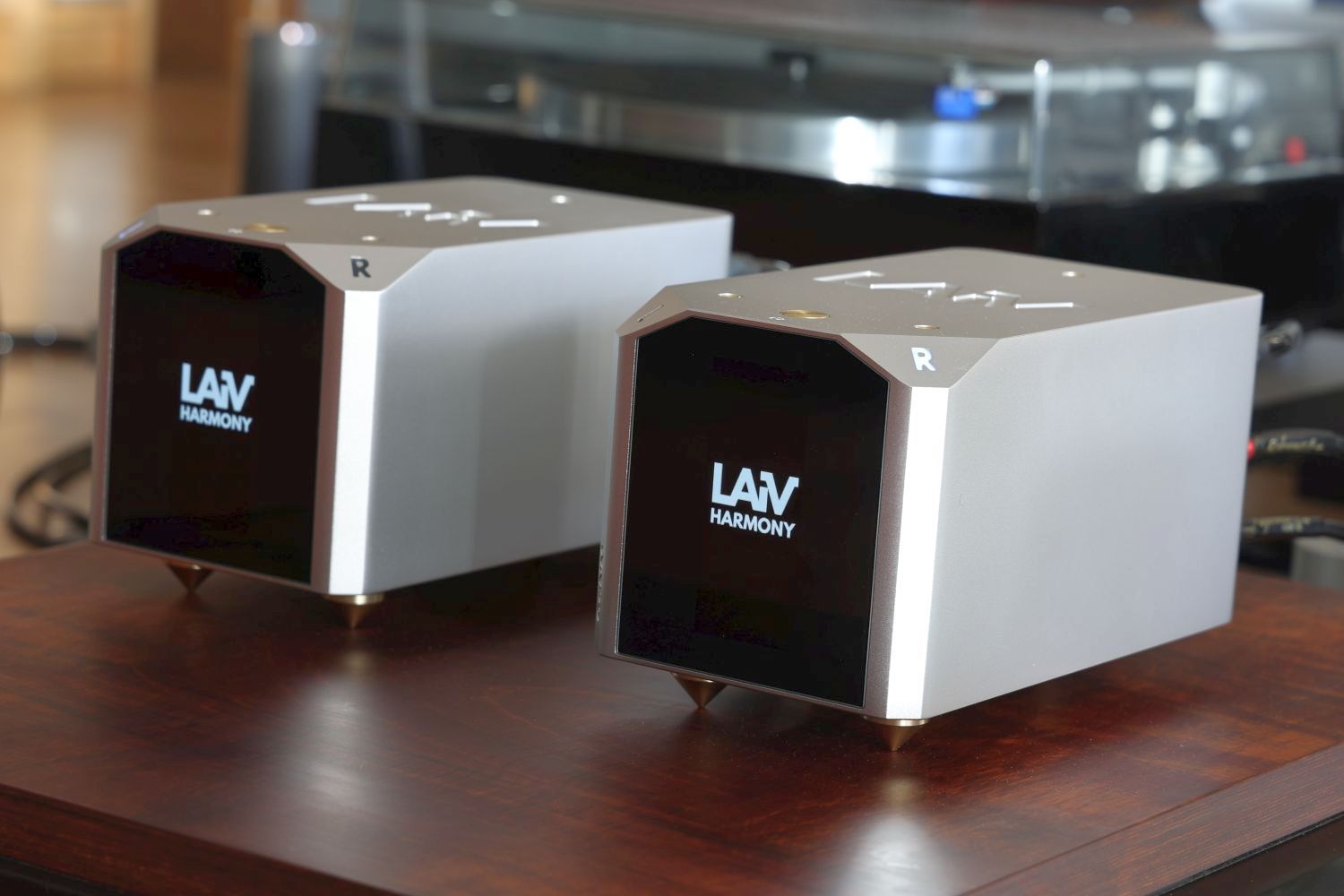
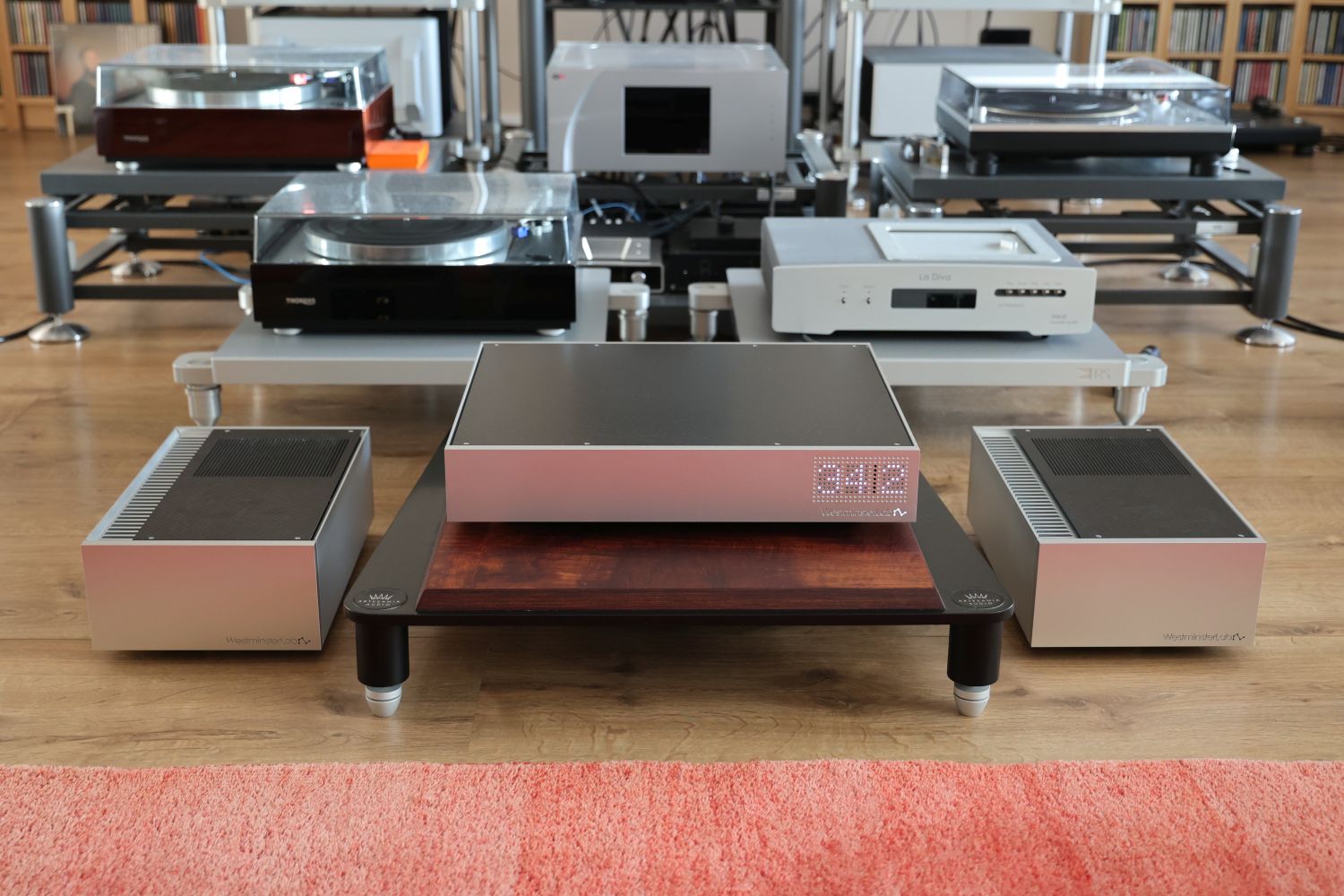
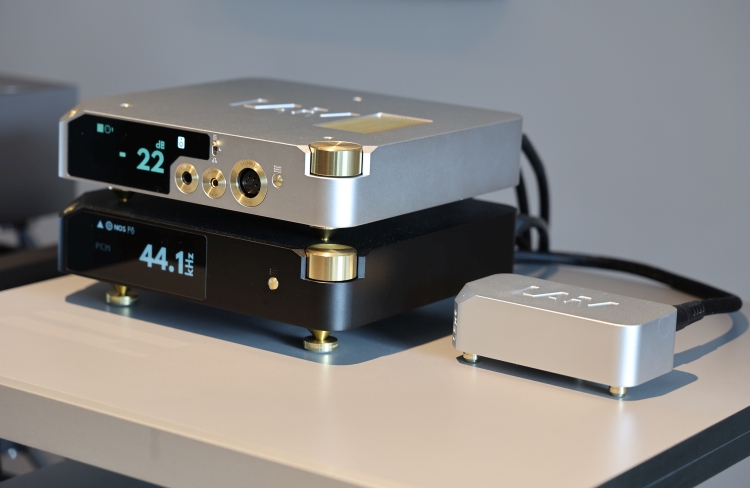
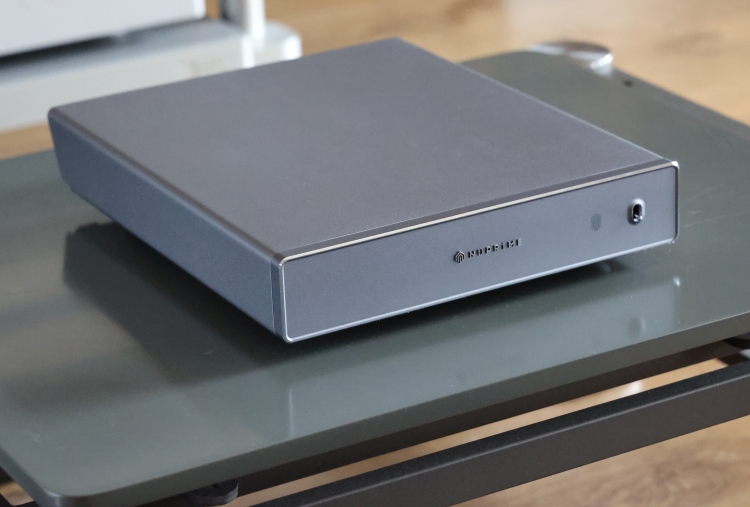
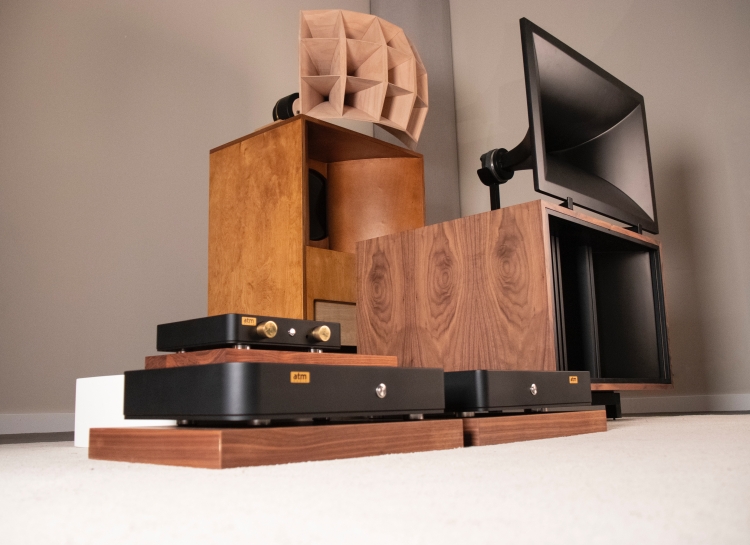
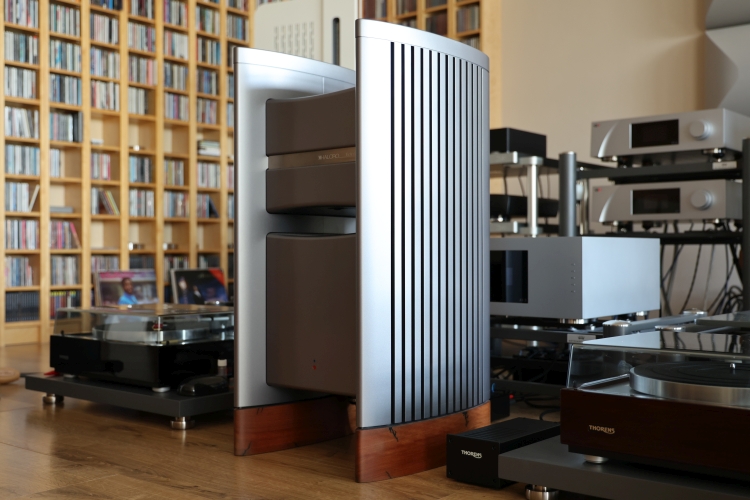
Hi Christiaan
Your current review drew my attention to the Snappers. Have you tried them with Ayon preamp? Are they going to find a place in HFA award list and where?
Thank you again for another informative review.
Hi Ilan, good thing you mentioned the HFA Award list. I had forgotten to add the Manleys but have done that now. As for the Ayon preamp, while I have not tried that, I have no doubt that this would have worked very well. The Snappers behave very linearly, without much in the way of a character, and so they can be paired with a wide range of components.
Christiaan pairing a pair of manley snappers to the wolf von langa son or the ayon spirit v? What do you think?
Depends on what you want. The Manleys sound sweeter and lusher, the Ayon sounds grippier and crisper.